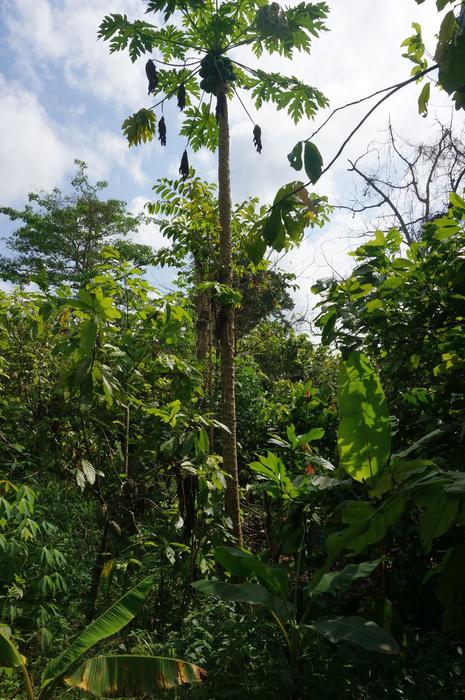This year’s climate talks saw real progress — just not on fossil fuels – Down To Earth

Report on COP30 Climate Conference Outcomes and Alignment with Sustainable Development Goals
Executive Summary
The United Nations COP30 climate conference in Belém, Brazil, yielded mixed results in the global effort to advance the 2030 Agenda, particularly Sustainable Development Goal 13 (Climate Action). Despite challenging conditions, including venue disruptions from flooding and fire that underscored the urgency of climate adaptation, nearly 60,000 delegates convened for the negotiations. Progress was achieved in areas of forest conservation and establishing frameworks for a just economic transition. However, the conference failed to secure a consensus on a definitive roadmap for phasing out fossil fuels, a critical step for achieving SDG 7 (Affordable and Clean Energy) and limiting global warming to 1.5°C. The geopolitical landscape, notably the absence of the United States, significantly impacted financial commitments and overall leadership.
Key Negotiation Outcomes: Fossil Fuels and Climate Action (SDG 13 & SDG 7)
A central focus of COP30 was the transition away from fossil fuels, a cornerstone for achieving both SDG 13 and SDG 7. The outcomes were as follows:
- Proposed Fossil Fuel Phase-Out Roadmap: A Brazilian-led initiative to create a roadmap for phasing out fossil fuels initially garnered support from over 80 countries. This proposal was a direct attempt to operationalize the transition to clean energy (SDG 7).
- Negotiation Stalemate: The initiative was ultimately unsuccessful. Fierce resistance from nations including Russia, Saudi Arabia, and India led to the removal of all references to a fossil fuel roadmap from the final agreement text.
- Alternative Initiative: In place of the roadmap, nations agreed to launch the “Global Implementation Accelerator.” This mechanism, to be led by the COP30 and COP31 Presidencies, aims to keep the 1.5°C target achievable, thereby continuing the work towards SDG 13.
- Future Efforts: Commitments were made to continue advocating for a fossil fuel phase-out in other international forums, including the G20 and a dedicated conference in 2026, indicating that momentum exists outside the formal UN consensus process.
Advancements in Terrestrial Ecosystems (SDG 15)
Significant progress was made on initiatives directly supporting SDG 15 (Life on Land), particularly concerning the protection of vital forest ecosystems.
- Tropical Forest Facility: A major success was the securing of US$9.5 billion in funding pledges for a new trust fund for rainforests. This facility is designed to provide resources to halt global deforestation and protect Indigenous lands.
- Deforestation Roadmap: A separate initiative to create a roadmap for ending deforestation secured the backing of 92 countries, reinforcing global commitment to preserving biodiversity and carbon sinks.
- Role of the Action Agenda: The success of these initiatives highlights the growing effectiveness of the COP’s Action Agenda, which mobilizes commitments from business, investors, and civil society, fostering the multi-stakeholder collaborations essential for SDG 17 (Partnerships for the Goals).
Challenges in Climate Finance and Reducing Inequality (SDG 10 & SDG 13)
Discussions on financial mechanisms to support climate adaptation for vulnerable nations were contentious, revealing significant challenges in upholding the principles of SDG 10 (Reduced Inequalities).
- Adaptation Finance Goal: Developing nations, which are most exposed to climate impacts despite having low emissions, advocated for tripling climate finance from the 2021 baseline of US$40 billion by 2030.
- Weakened Commitment: The final text failed to meet this demand. It merely “calls for efforts to at least triple adaptation finance by 2035,” delaying the timeline and omitting a clear funding baseline. This outcome represents a setback for nations requiring support to build resilience in line with SDG 13’s adaptation targets.
Socio-Economic Considerations: A Just Transition (SDG 8)
A positive outcome of the conference was the formal agreement to develop a just transition mechanism, directly addressing the socio-economic dimensions of climate action and aligning with SDG 8 (Decent Work and Economic Growth).
- Mechanism Purpose: The new mechanism will focus on enhancing international cooperation, providing technical assistance, and facilitating knowledge-sharing.
- Supporting Workers and Communities: Its primary goal is to ensure that the global shift towards a low-carbon economy is equitable and supports the workers and communities affected by the transition.
Geopolitical Context and Partnerships for the Goals (SDG 17)
The effectiveness of global climate negotiations was heavily influenced by the geopolitical climate, testing the strength of SDG 17 (Partnerships for the Goals).
- United States Absence: The lack of a US government delegation created a significant leadership and financial void. As a major historical emitter and traditional funder, its absence had a dampening effect on new financial pledges and undermined the spirit of collective responsibility.
- China’s Position: China, a global leader in clean technology, demonstrated reluctance to assume a broader leadership role, focusing instead on its domestic energy transition and trade-related matters.
- Civil Society and Smaller Nations: In the absence of leadership from major powers, smaller nations, Indigenous peoples, and civil society organizations became prominent voices, advocating for science-based targets and accelerated action. An estimated 70,000 people marched in Belém, affirming widespread public support for climate justice.
1. Which SDGs are addressed or connected to the issues highlighted in the article?
SDG 13: Climate Action
- The entire article is centered on the COP30 climate talks, which are the primary international mechanism for addressing climate change. It discusses negotiations on reducing emissions, climate finance, and adapting to climate impacts like floods and fires, which are the core components of SDG 13.
SDG 15: Life on Land
- The article specifically highlights efforts to protect forests. It details the “Tropical Forest Facility,” a trust fund designed to “arrest global deforestation and protect Indigenous lands, including in the Amazon’s vital carbon sink.” This directly relates to the conservation and sustainable use of terrestrial ecosystems.
SDG 7: Affordable and Clean Energy
- A major theme is the global effort to “phase out fossil fuels.” This push for a transition away from fossil fuels inherently promotes a shift towards affordable and clean energy sources. The article also mentions China’s role as a “renewables and clean tech giant” and its significant clean tech exports.
SDG 17: Partnerships for the Goals
- The article describes the COP30 summit as a massive global partnership, with “nearly 60,000 delegates” from 194 countries. It also discusses the challenges of this partnership, such as the US departure from the Paris Agreement and the difficulty in reaching consensus. Furthermore, it highlights the role of multi-stakeholder partnerships through the “Action Agenda,” which includes commitments from “business, investors and civil society.”
SDG 8: Decent Work and Economic Growth
- The article mentions the development of a “just transition mechanism.” This mechanism is aimed at supporting “workers and communities” as countries shift towards a “low carbon global economy,” connecting climate action with the socio-economic well-being of the workforce.
2. What specific targets under those SDGs can be identified based on the article’s content?
SDG 13: Climate Action
- Target 13.1: Strengthen resilience and adaptive capacity to climate-related hazards and natural disasters. The article mentions that “flood and fire disrupted negotiations” and discusses the need for “funding climate finance and adaptation to the changes already emerging.”
- Target 13.2: Integrate climate change measures into national policies, strategies and planning. The proposed “roadmap to phase out fossil fuels” and the creation of the “Global Implementation Accelerator” are direct examples of integrating climate measures into international and, subsequently, national planning.
- Target 13.a: Implement the commitment undertaken by developed-country parties to the United Nations Framework Convention on Climate Change to a goal of mobilizing jointly $100 billion annually by 2020 from all sources to address the needs of developing countries. The article discusses the push for a “tripling of climate finance” and notes that “New finance pledges were broadly underwhelming,” directly referencing this target’s theme.
SDG 15: Life on Land
- Target 15.2: Promote the implementation of sustainable management of all types of forests, halt deforestation, restore degraded forests and substantially increase afforestation and reforestation globally. The article’s focus on the “Tropical Forest Facility” and the “roadmap towards ending deforestation” directly aligns with this target.
SDG 7: Affordable and Clean Energy
- Target 7.2: By 2030, increase substantially the share of renewable energy in the global energy mix. The central debate on agreeing to a “roadmap to phase out fossil fuels” is a prerequisite for achieving this target.
- Target 7.a: By 2030, enhance international cooperation to facilitate access to clean energy research and technology… and promote investment in energy infrastructure and clean energy technology. China’s role in providing “clean tech exports” that “cut overseas emissions” is a clear example of this cooperation.
SDG 17: Partnerships for the Goals
- Target 17.16: Enhance the global partnership for sustainable development, complemented by multi-stakeholder partnerships. The article describes the COP30 summit itself as a global partnership and explicitly mentions the “Action Agenda” which spurs climate action through commitments from “business, investors and civil society.”
SDG 8: Decent Work and Economic Growth
- Target 8.4: Improve progressively, through 2030, global resource efficiency in consumption and production and endeavour to decouple economic growth from environmental degradation. The creation of a “just transition mechanism” to help countries shift to a “low carbon global economy” supports this decoupling by addressing the social aspects of the transition.
3. Are there any indicators mentioned or implied in the article that can be used to measure progress towards the identified targets?
SDG 13: Climate Action
- Implied Indicator for Target 13.a: The article provides specific financial figures that can be used as indicators. It mentions the goal to triple climate finance from the “US$40 billion (A$62 billion) agreed at COP26.” The failure to meet this goal and the fact that “New finance pledges were broadly underwhelming” serve as qualitative measures of progress.
SDG 15: Life on Land
- Indicator for Target 15.2: The article provides a direct financial indicator for forest protection efforts, stating that the “Tropical Forest Facility” secured “US$9.5 billion (A$14.7 billion) in funding pledges.” It also mentions that the “roadmap towards ending deforestation” secured “92 backers,” which is a quantitative indicator of political will.
SDG 7: Affordable and Clean Energy
- Implied Indicator for Target 7.2: The number of countries supporting the fossil fuel phase-out roadmap (“more than 80 countries”) serves as an indicator of commitment to increasing the share of renewable energy.
SDG 17: Partnerships for the Goals
- Indicator for Target 17.16: The article provides several quantitative indicators of partnership and engagement. These include the “nearly 60,000 delegates” attending the talks, the “estimated 70,000 people” who marched in Belém, and the “194 countries” participating in negotiations.
4. Create a table with three columns titled ‘SDGs, Targets and Indicators” to present the findings from analyzing the article.
| SDGs | Targets | Indicators |
|---|---|---|
| SDG 13: Climate Action |
|
|
| SDG 15: Life on Land |
|
|
| SDG 7: Affordable and Clean Energy |
|
|
| SDG 8: Decent Work and Economic Growth |
|
|
| SDG 17: Partnerships for the Goals |
|
|
Source: theconversation.com
What is Your Reaction?
 Like
0
Like
0
 Dislike
0
Dislike
0
 Love
0
Love
0
 Funny
0
Funny
0
 Angry
0
Angry
0
 Sad
0
Sad
0
 Wow
0
Wow
0




















































.jpg.webp?itok=0ZsAnae9#)


























